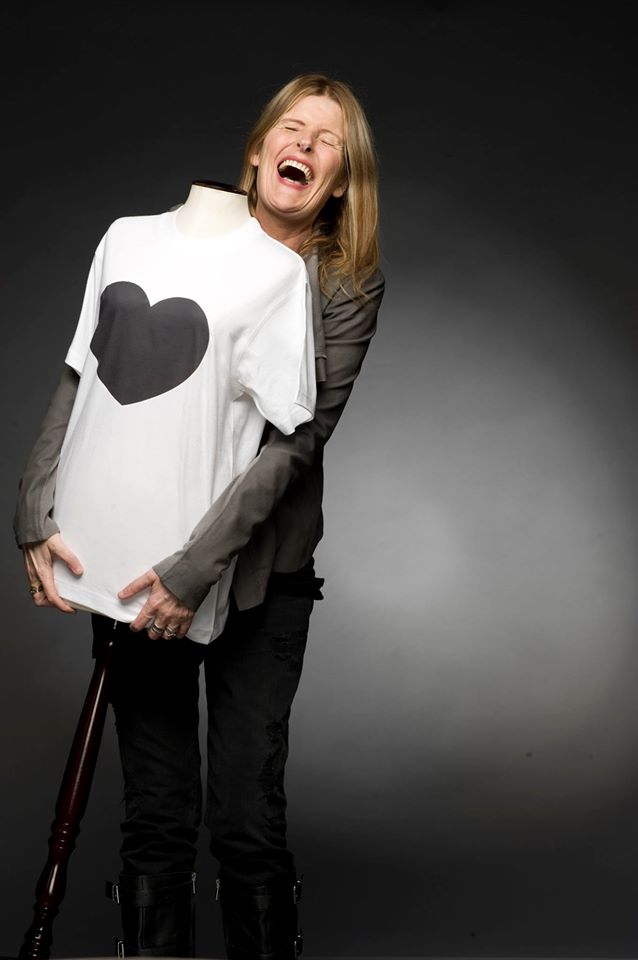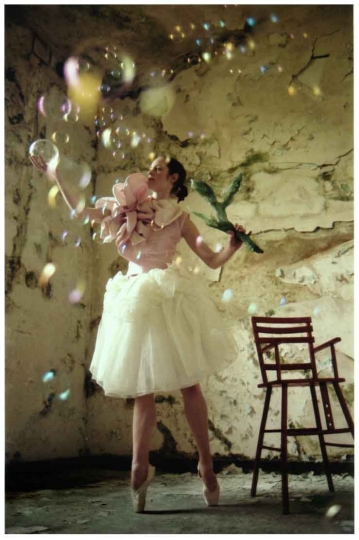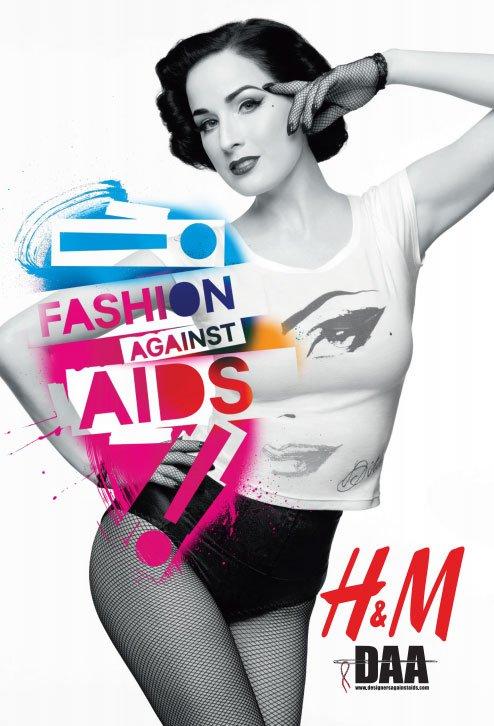
There are people that can turn every heartbreaking event of their life into an act of positivity -and Ninette Murk is definitely one of them. The founder and creative director at Designers Against AIDS (DAA) and creative platform for social change Beauty Without Irony (BWI), Murk created DAA as a tribute to her assistant, Peter, who died of an AIDS-related illness; and BWI as a response to the cynical outlook the fashion business was adopting –being a fashion journalist she was experiencing it big time.
20 years later, both foundations are going from strength to strength, with DAA successfully collaborating with leading and popular fashion brands, designers and celebrities such as H&M, Eastpak, JBC, Delvaux, Marc Jacobs, Bernhard Willhelm, Rihanna, Timbaland, Robert Smith from The Cure, Pharrell Williams and Kendall Jenner. In 2013 Murk relaunched BWI as a creative platform for social change, staging exciting international exhibitions in Essaouira (Morocco) and Antwerp (Belgium).
Today, in a world experiencing the aftermaths of the corona pandemic and in the midst of the #blacklivesmatter protests in the US and Europe, Murk’s creative optimism appears the only way to go forward. Indeed, her full body of work is a celebration of pure beauty, idealism and lust for life -a lust that overcomes all obstacles to support a good cause –and makes a positive change to the world. Here, she speaks about DAA, her more recent project ‘Beauty for a Better World’- and how eternal optimism in action can save the world.
Tell us a bit about your most recent projects, especially Beauty for a Better World?
Beauty for a Better World was a very early project of mine that started with the Twin Towers incident and the overall world apocalypse that happened -and didn’t really get the attention it deserved. I then went on to found Designers against AIDS, a project that became very famous -and got media attention especially after our 5 years lasting global H&M collaboration. Many designers contributed, in fact, we have a vast archive of work that represents our mission. Meanwhile, I wanted to reboot my beauty & art projects, as I feel the perception of beauty in the world is important-but most donations were made to DAA just because the initiative has gained so much publicity. I don’t think that’s bad, naturally, I just felt I needed to do something involving beauty-and thus restarted it. We have a great team of high profile and talented people both in the fashion and media industry that are passionate about our mission. I believe in beauty -in fact, the process of choosing your most beautiful artwork of all to be exhibited on behalf of BFBW has been cathartic even for the artists themselves.
Your work deals a lot with beauty and happiness through awareness and responsibility. How do you define the idea of responsibility in the fashion industry? What’s missing in terms of ethics right now?
Every company (not only in fashion!) should make sure that it’s being fair on every level of their process- towards their employees, customers, suppliers, ad /media agency, shareholders – and also to the planet. The focus right now for many businesses is mainly about making as much money as possible, cutting costs wherever they can. This is not sustainable and it certainly is not human.

What is the greatest lesson fashion must learn from the coronavirus epidemic?
Fashion must slow down, its more imperative now than it has been some years ago. The fashion schedule with so many shows a year and countless meetings and fast fashion production are destroying nature, the most important thing we have-and thus our wellbeing and future. There are solutions: reduce the schedule, produce less and better quality clothes that are ethically made, and make your supply chain as transparent as possible. Full transparency is needed. I am also a member of GWAND, a Swiss Festival for Sustainable fashion and have learned a lot from these people-advocates of sustainability in a creative and not boring, fun way! Sustainable fashion isn’t anymore how it was some years ago -the clothes are actually very nice, stylish and more accessible price-wise.
The #Blacklivesmatter movement is causing a stir right now. How can fashion brands fully embrace diversity?
They must mean it! Not many brands are actually investing in diversity in their staff roles or ensure equal pay rates. They must hire more black people, promote and consult them. Diversity in fashion is not a new concept, in the past, Benetton and their photographer Oliviero Toscani have been successfully embracing it with great vision and commercial success. The Benetton clothes were just brightly coloured basics, but the message, the awareness, the brand ethics were powerful. They talked about AIDS, racism, everything that matters. Diversity also means more representation in terms of sizes. Brands must embrace diversity and actually mean it as a long term strategy-don’t just add a plus-size model to gain attention but then not do anything groundbreaking. You don’t brush off the need to show diversity and inclusivity just by stating it or posting #blacklivesmatter on your Facebook page.
So, how does it feel being an eternal optimist?
This is more part of who I am, more of my attitude towards life than a structured philosophy. I have been through a lot the recent years in terms of personal health and have managed to get through them smiling and with optimism. You see, I may occasionally feel pain or get a low mood, but then I focus on all the great things I am blessed to have: a nice life, a house with a beautiful garden, a great husband and an invaluable circle of friends. Those are priceless -and that’s how we all should face life.


First published in The Style Title
